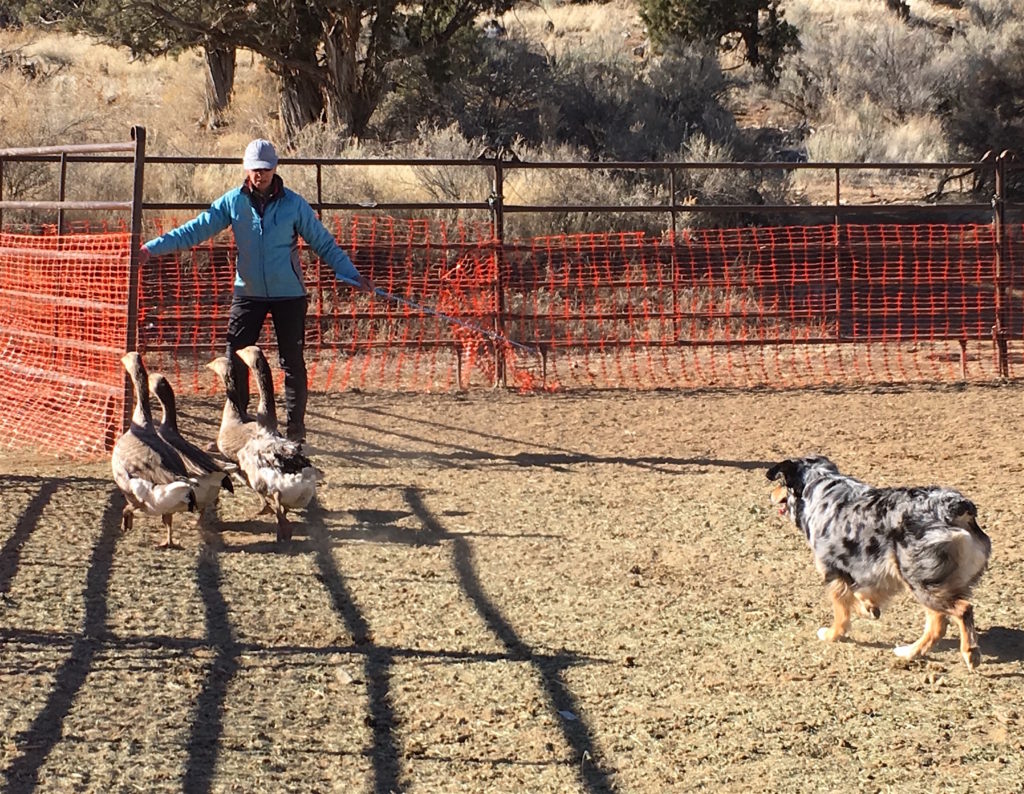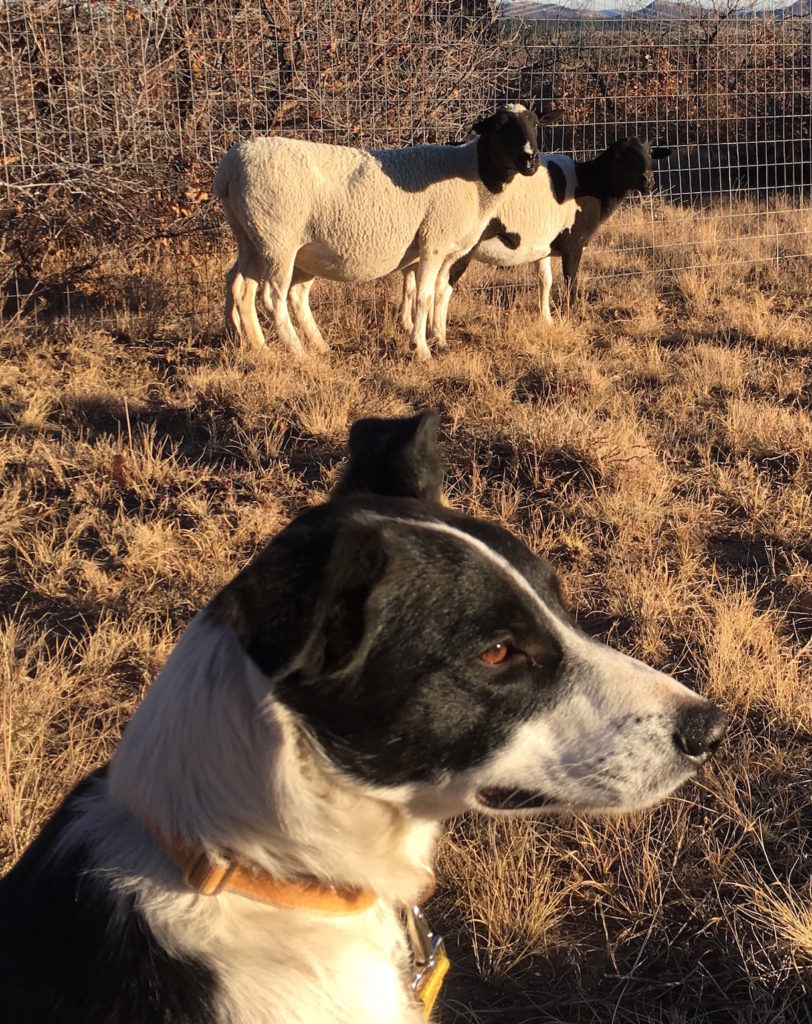
Ann Chernoff Allan works with her dog at a herding competition
The weather is warming. Snow is disappearing. And like riding season, herd dog training season is back!
My dogs and I are fortunate to resume our training with Ann Chernoff Allan, a remarkable local trainer. Read more here.
Last year, we trained faithfully for six months, once or twice a week. The dogs went from racing recklessly after stock to starting to learn to “rate” or follow behind them more reasonably. They were learning that faster is not better. By the end of the season, I was noticing how calm the sheep were becoming.
“That’s because your dogs are calmer,” Chernoff Allan said. Progress!
This spring, one of our homework assignments has been to improve our “down” while the dogs are away from me. Wherever they may be, when I say “down,” they need to stop moving and sit.
As you might imagine, this command is much easier if a dog is right in front of you. It’s harder when they are 100 feet or more away. And even harder if stock animals are moving. The temptation to listen to instinct rather than me is huge.
With Ann’s help, first I identified how I was training “down” incorrectly:
-

With Ann’s help, Kip learns that faster is NOT better when it comes to beginner herding
While taking a walk and seeing the dogs ahead of me by 80 feet, I would ask them all to “down.” I was training them together, not individually.
- After they performed the “down,” I’d release them and call them toward me for a treat. That’s not effective either. Especially with novice dogs, the reward needs to connect immediately with the request. In effect, the dogs were learning to come to me and knew they were being rewarded for the recall, not the “down.” I should have been walking up to them as they stayed “down” and rewarding them where they were.
Ann offered this critique: “You have to be very careful to reward the behavior you want. If you call them to you after asking for a “down,” then you’re rewarding the coming to you. They need to understand very definitively what it is you’re rewarding.”
Getting a good “down” is an essential learning block on which other training elements will be built. Like many other skills, it can be broken down in smaller, simpler components.
Both Ann, who rode often some time ago, and I can relate this principle in horse work:

A moment of calm for Monty. Calm is good.
For months, I’ve been working on saddling with my skittish mule, Jolene. Recently, I’ve realized that I was rushing the process and training ineffectively. If I broke it down and paused:
- To let her smell the pad
- After putting the pad on her back
- To let her smell the saddle
- After putting the saddle on her back
- After gently cinching the girth,
then I can make faster progress on subsequent saddlings. When I pause, I wait for some kind of dopamine release, which can be indicated by licking and chewing. That licking and chewing, in turn, might be preceded by a tail swish or blinking or a leg cock. (But beware, tail swishing can also indicate irritation on the part of the horse.)
I explained this go-slow-to-go-fast method.
Said Ann:
“If I have micro-steps and pause mid-chore, I’ll have greater success with the whole package. I’m slowing down in order to make better progress. Just little, itty bitty positive baby steps. At first, they don’t see the whole package. That’s way too overwhelming to them.
“With time, they’ll see the whole package. They’ll get it. It becomes a totally rewarding experience because you have rewarded the little parts in between.”